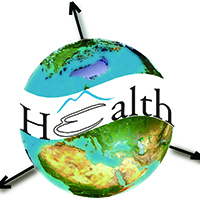Geocoding precision of birth records from 2008 to 2017 in Kentucky, USA

All claims expressed in this article are solely those of the authors and do not necessarily represent those of their affiliated organizations, or those of the publisher, the editors and the reviewers. Any product that may be evaluated in this article or claim that may be made by its manufacturer is not guaranteed or endorsed by the publisher.
Authors
Maternal address information captured on birth records is increasingly used to estimate residential environmental exposures during pregnancy. However, there has been limited assessment of the geocoding precision of birth records, particularly since the adoption of the 2003 standard birth certificate in 2015. To address this gap, this study evaluated the geocoding precision of live and stillbirth records of Kentucky residents over ten years, from 2008 through 2017. This study summarized the demographic characteristics of imprecisely geocoded records and, using a bivariate logistic regression, identified covariates associated with poor geocoding precision among three population density designations-metro, non-metro, and rural. We found that in metro areas, after adjusting for area deprivation, education, and the race, age and education of both parents, records for Black mothers had 48% lower odds of imprecise geocoding (aOR=0.52, 95% CI: 0.48, 0.56), while Black women in rural areas had 96% higher odds of imprecise geocoding (aOr=1.96, 95% CI: 1.68, 2.28). This study also found that over the study period, rural and non-metro areas began with a high proportion of imprecisely geocoded records (38% in rural areas, 19% in non-metro), but both experienced an 8% decline in imprecisely geocoded records over the study period (aOr=0.92, 95% CI: 0.92, 0.94). This study shows that, while geocoding precision has improved in Kentucky, further work is needed to improve geocoding in rural areas and address racial and ethnic disparities.
How to Cite

This work is licensed under a Creative Commons Attribution-NonCommercial 4.0 International License.
PAGEPress has chosen to apply the Creative Commons Attribution NonCommercial 4.0 International License (CC BY-NC 4.0) to all manuscripts to be published.













